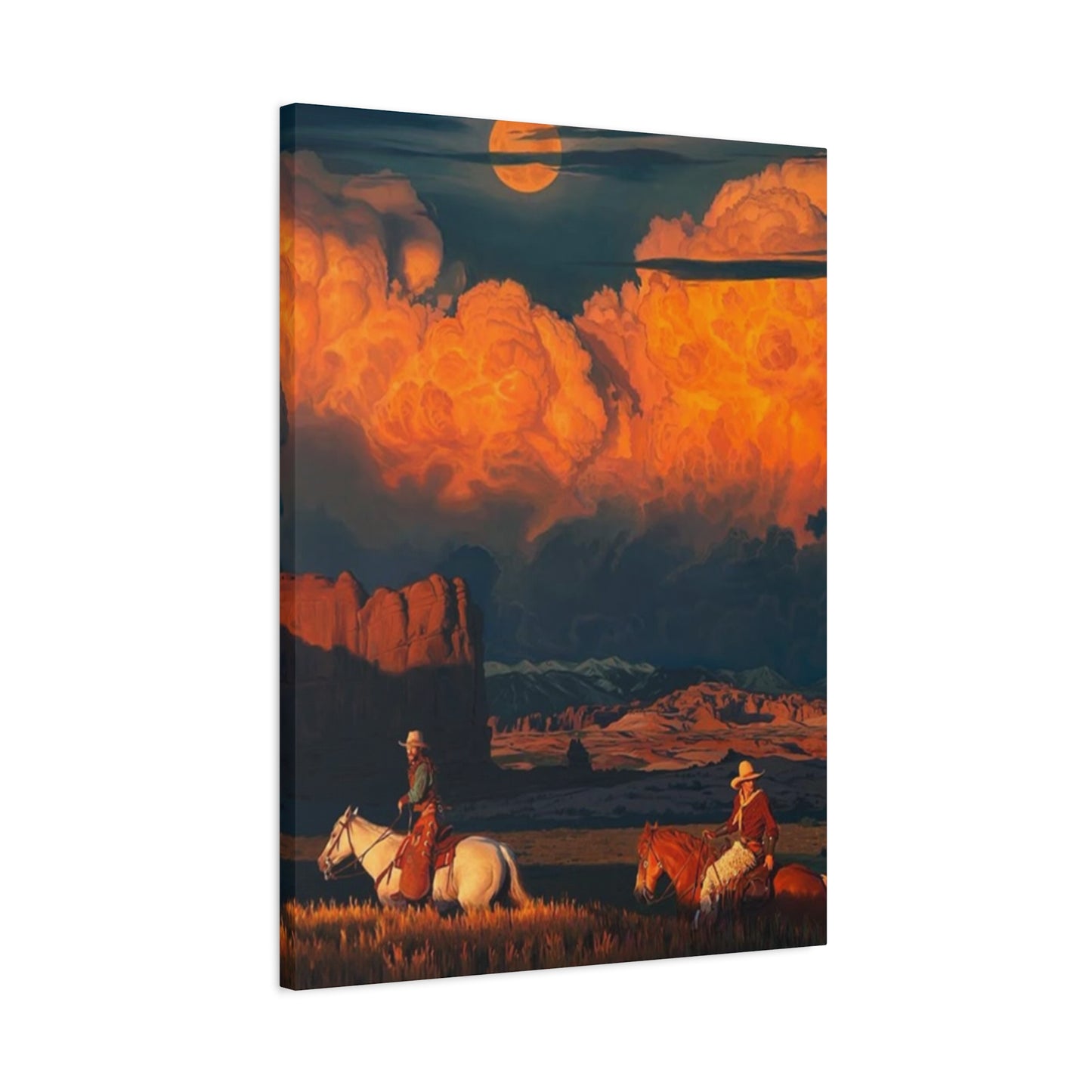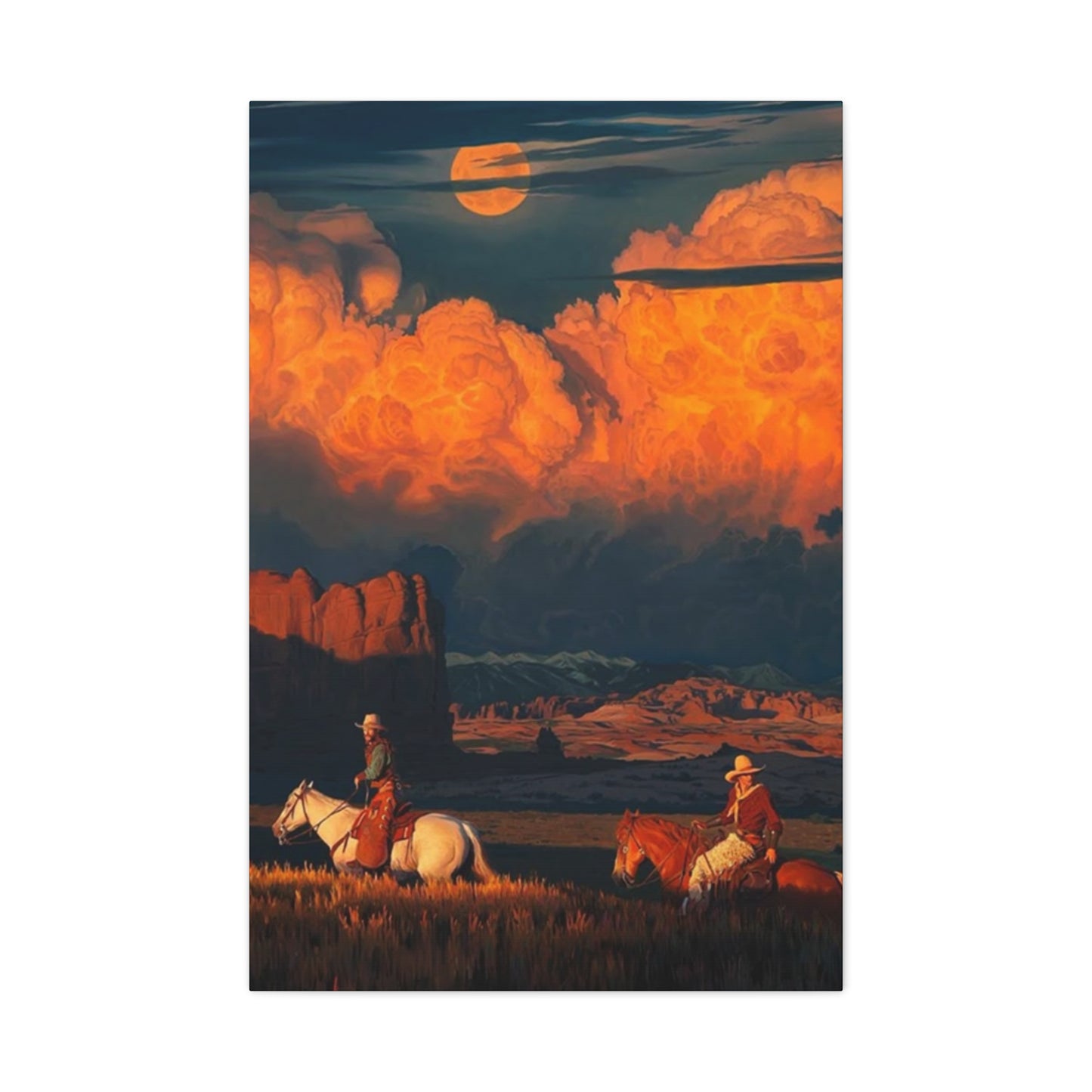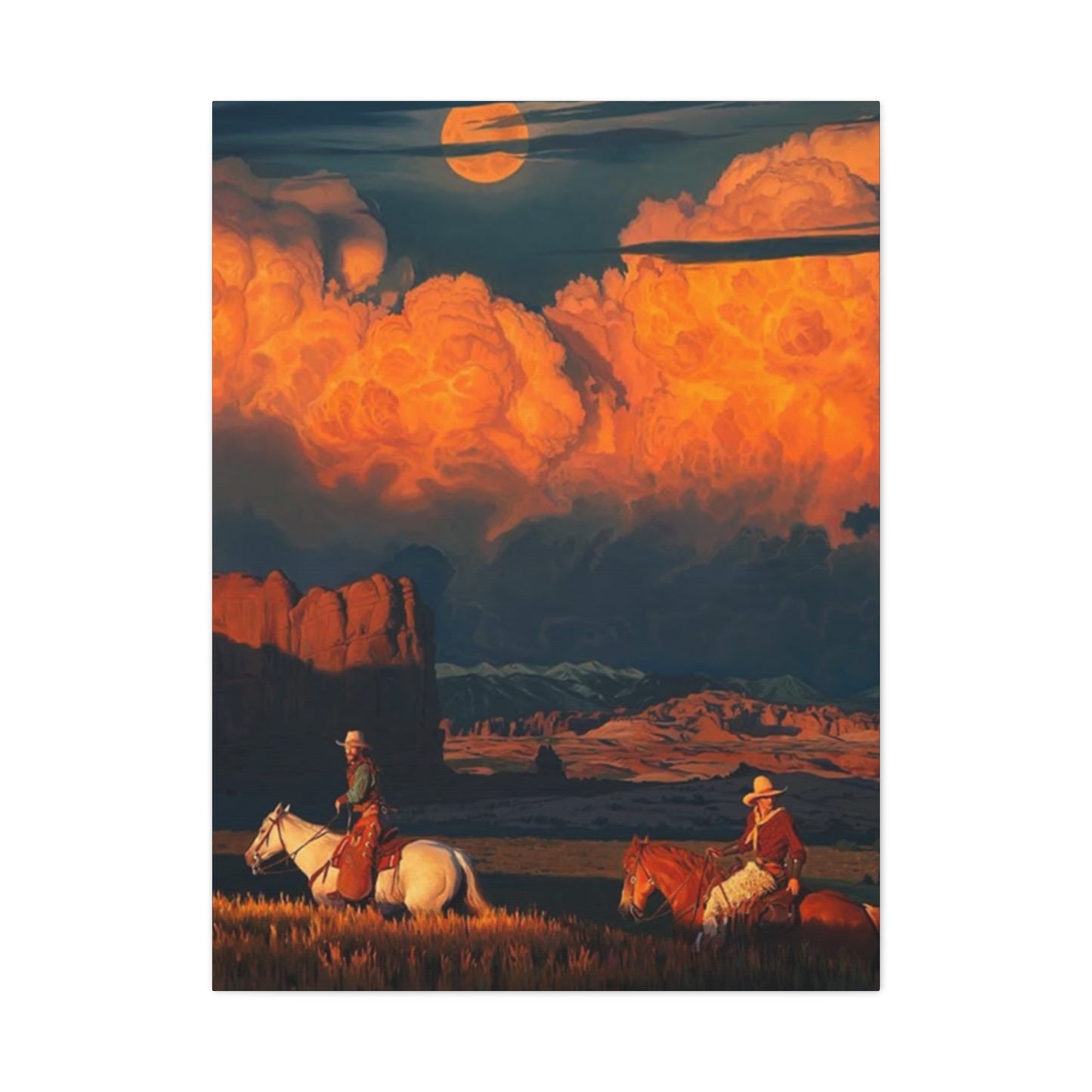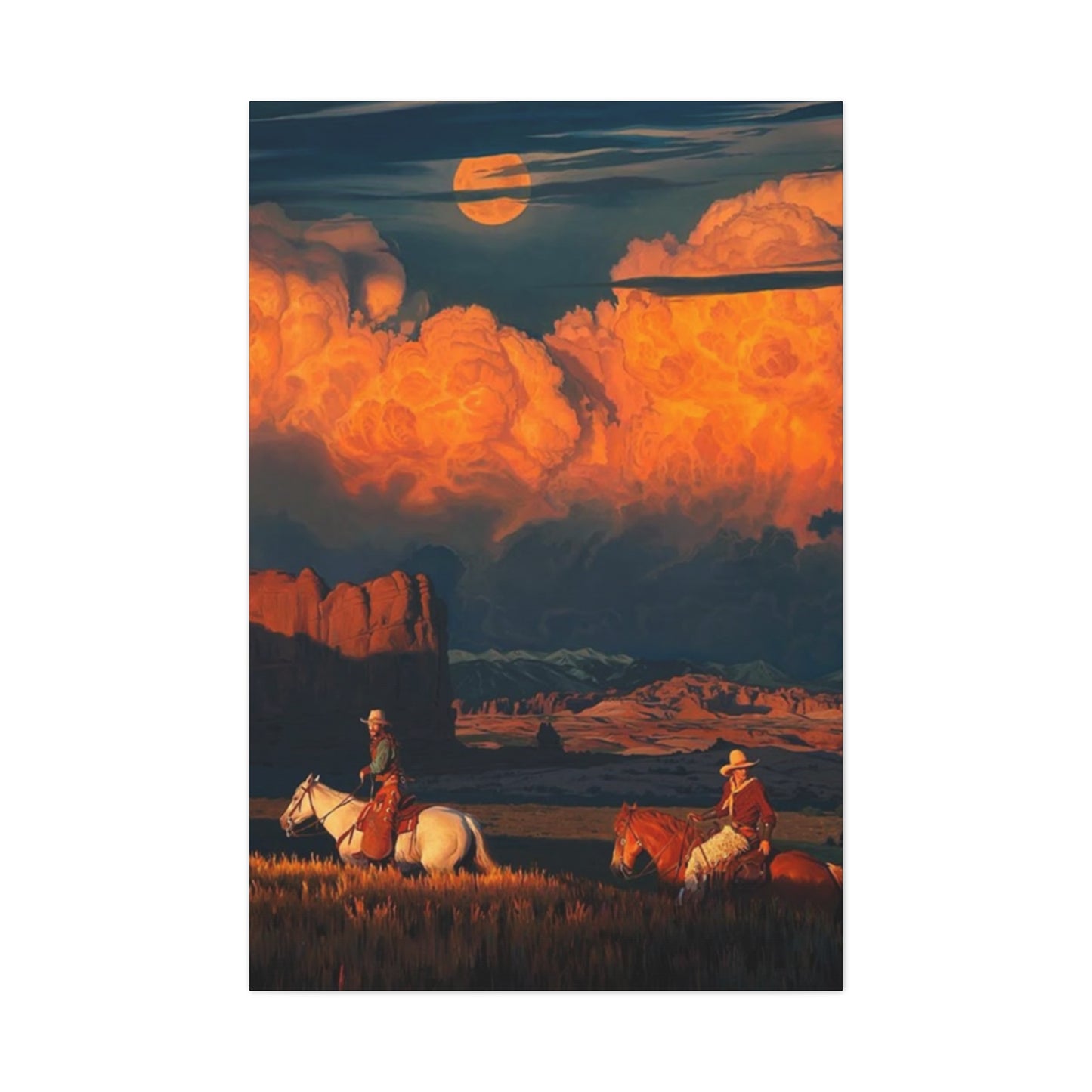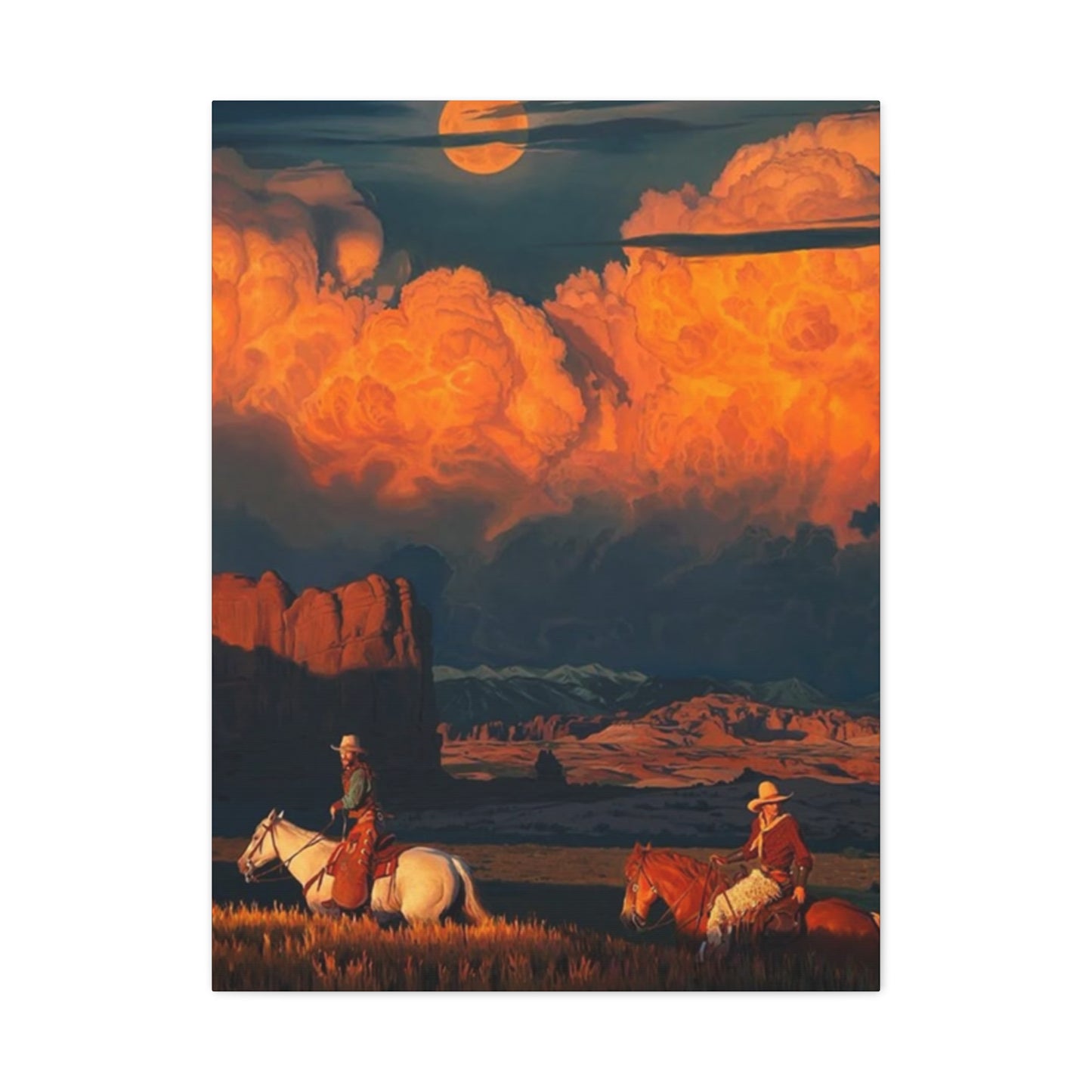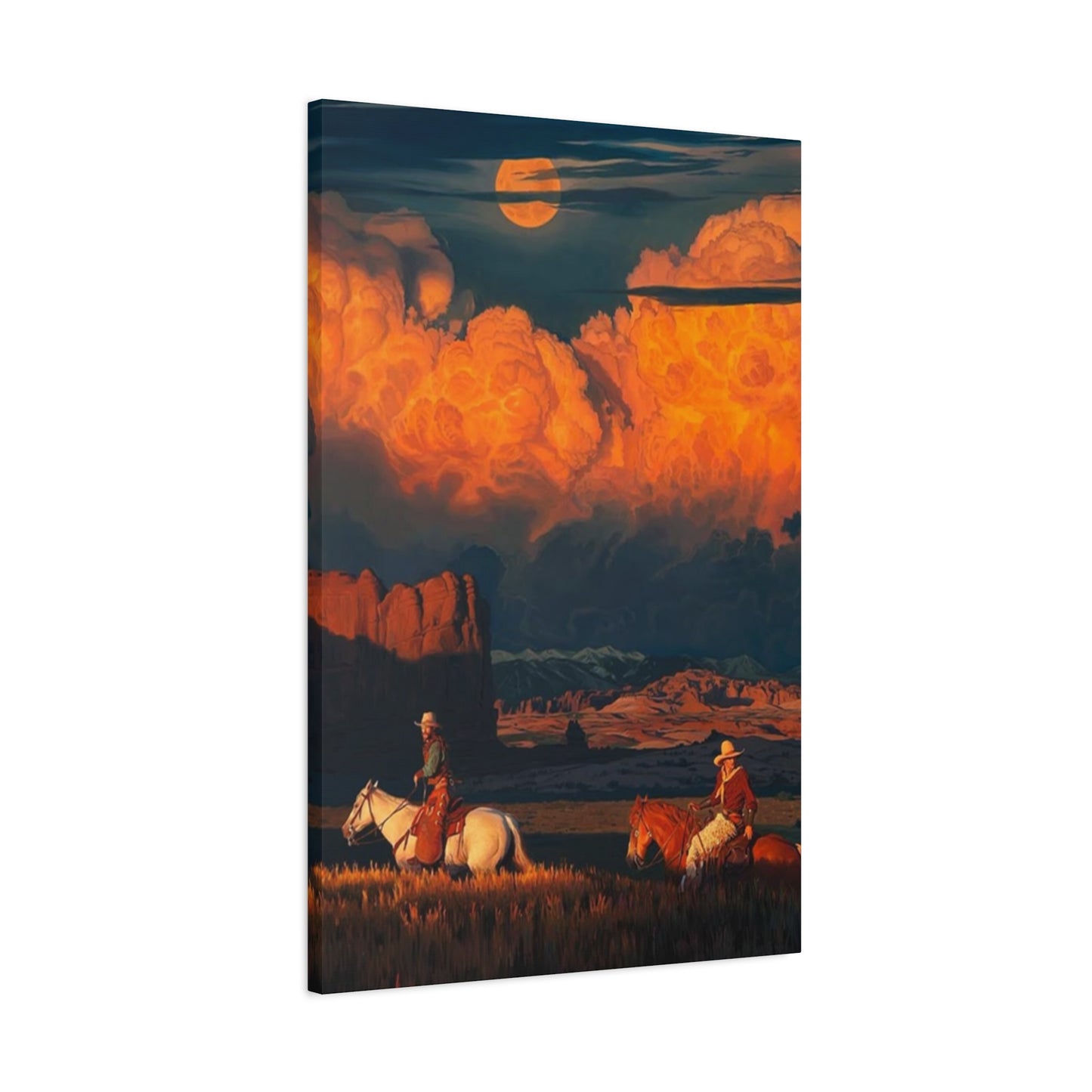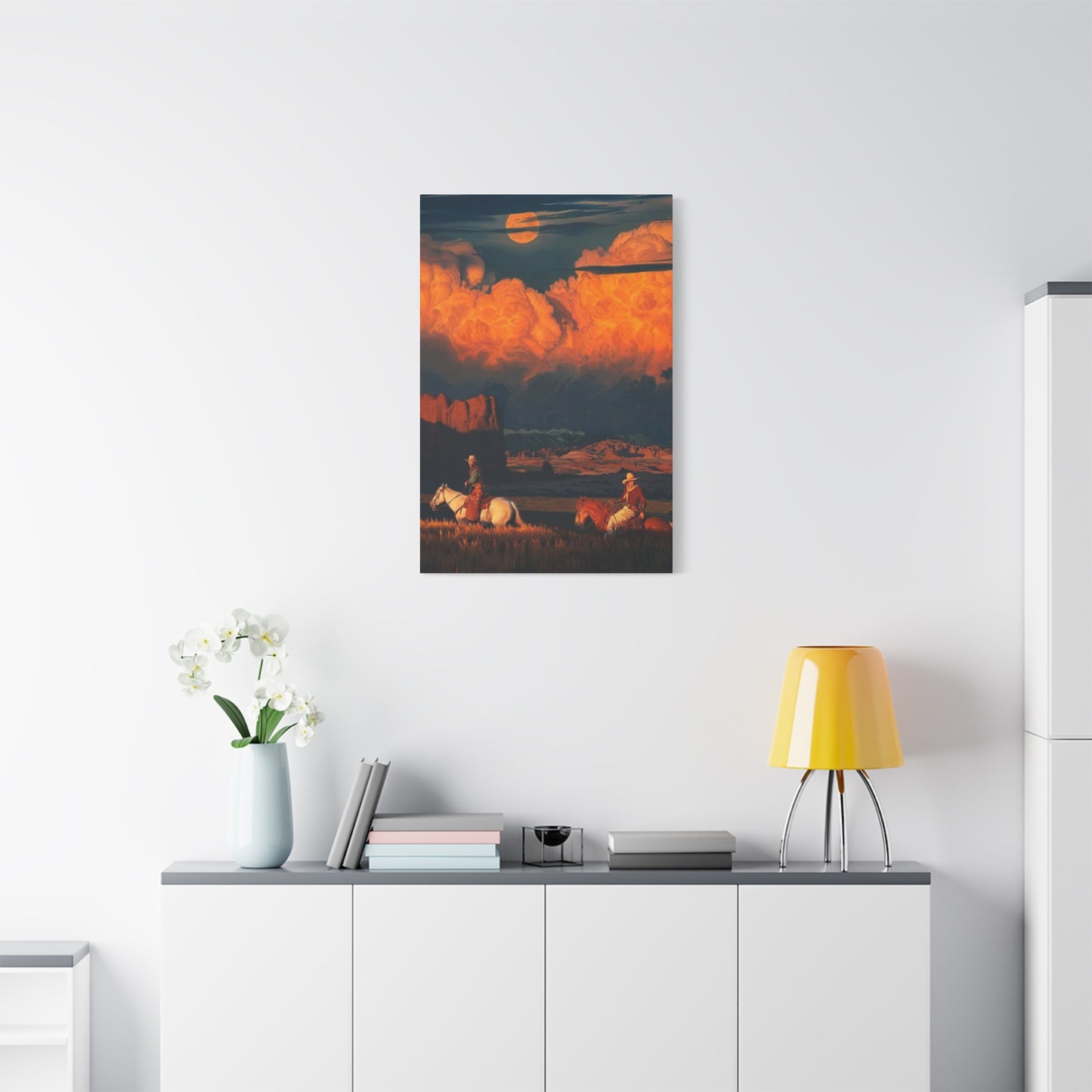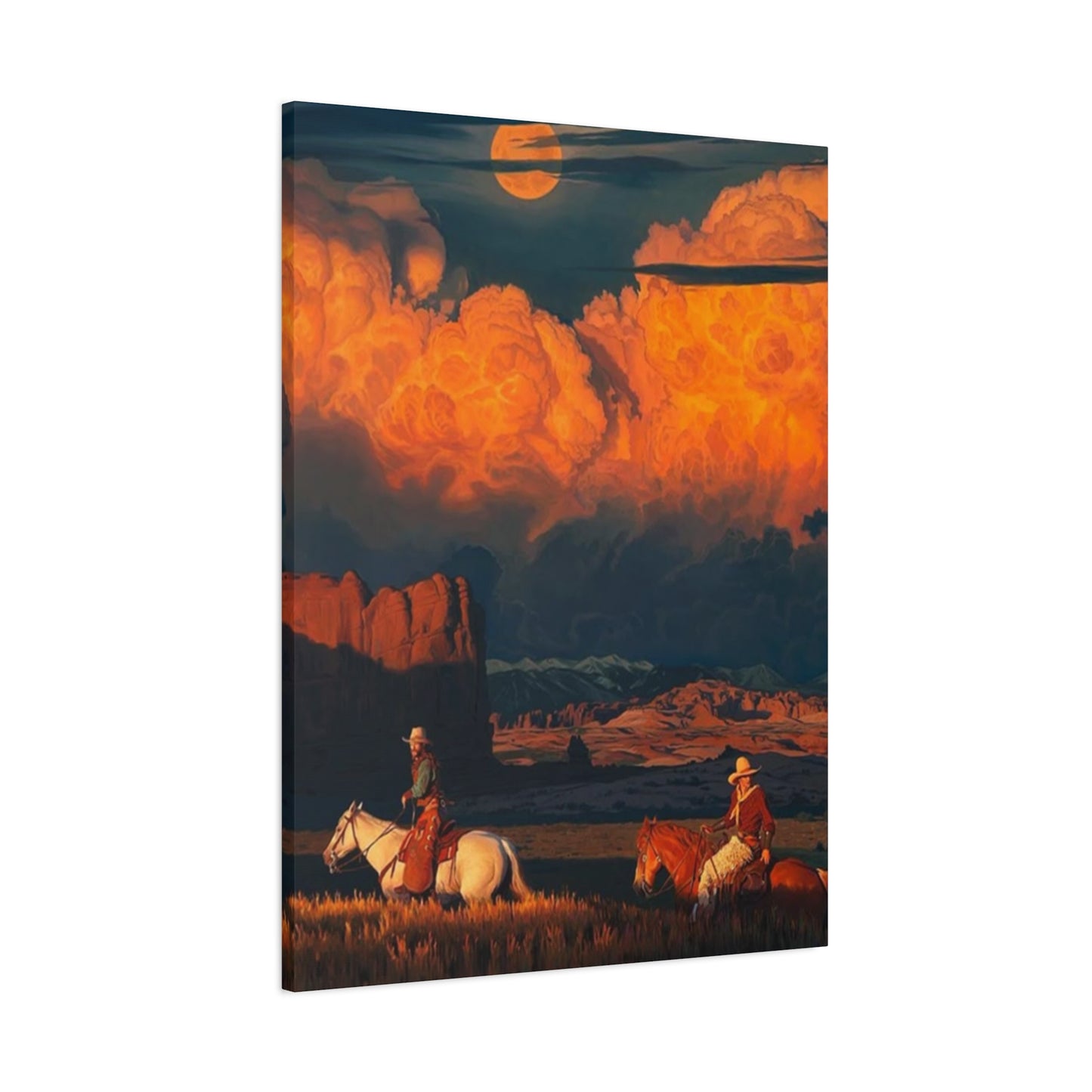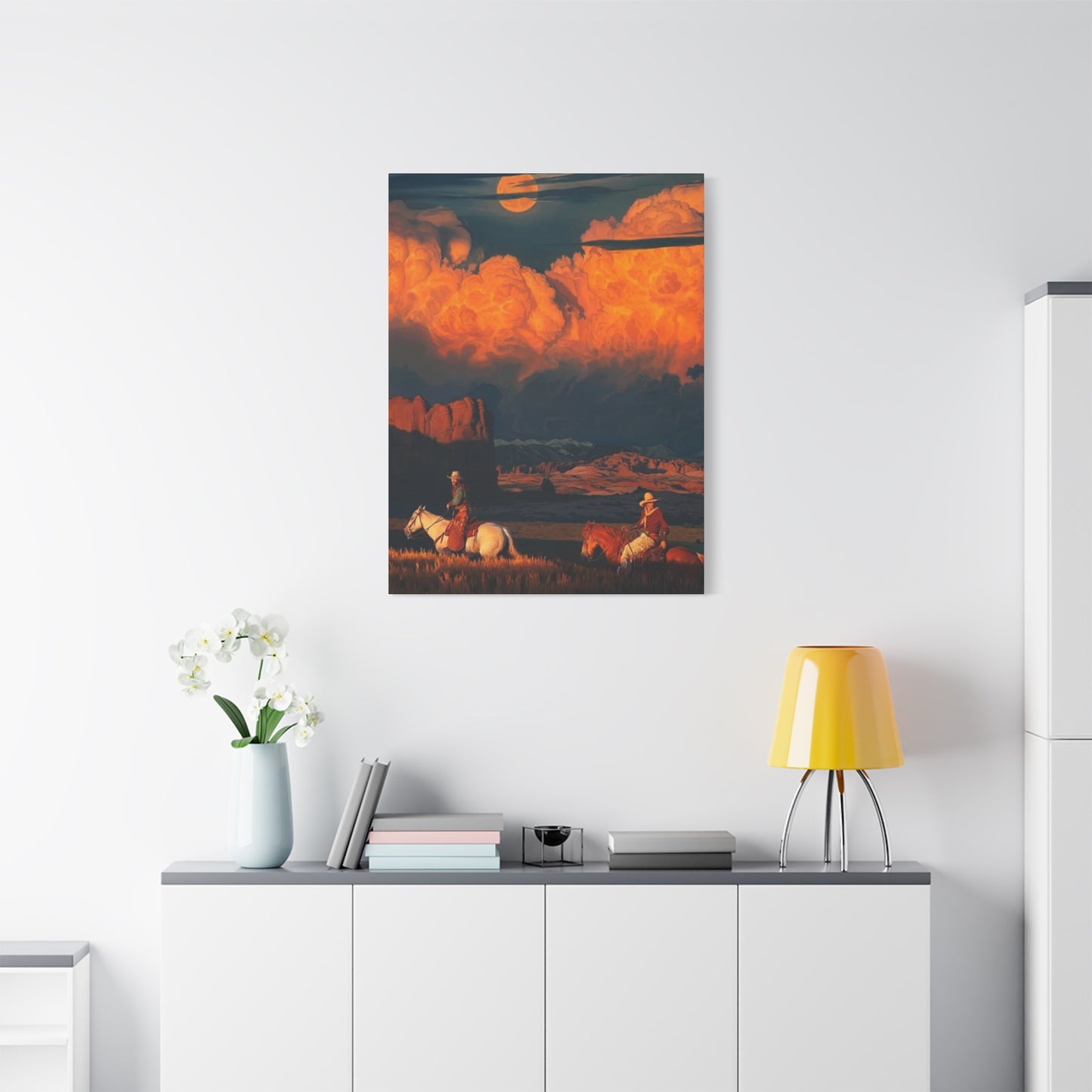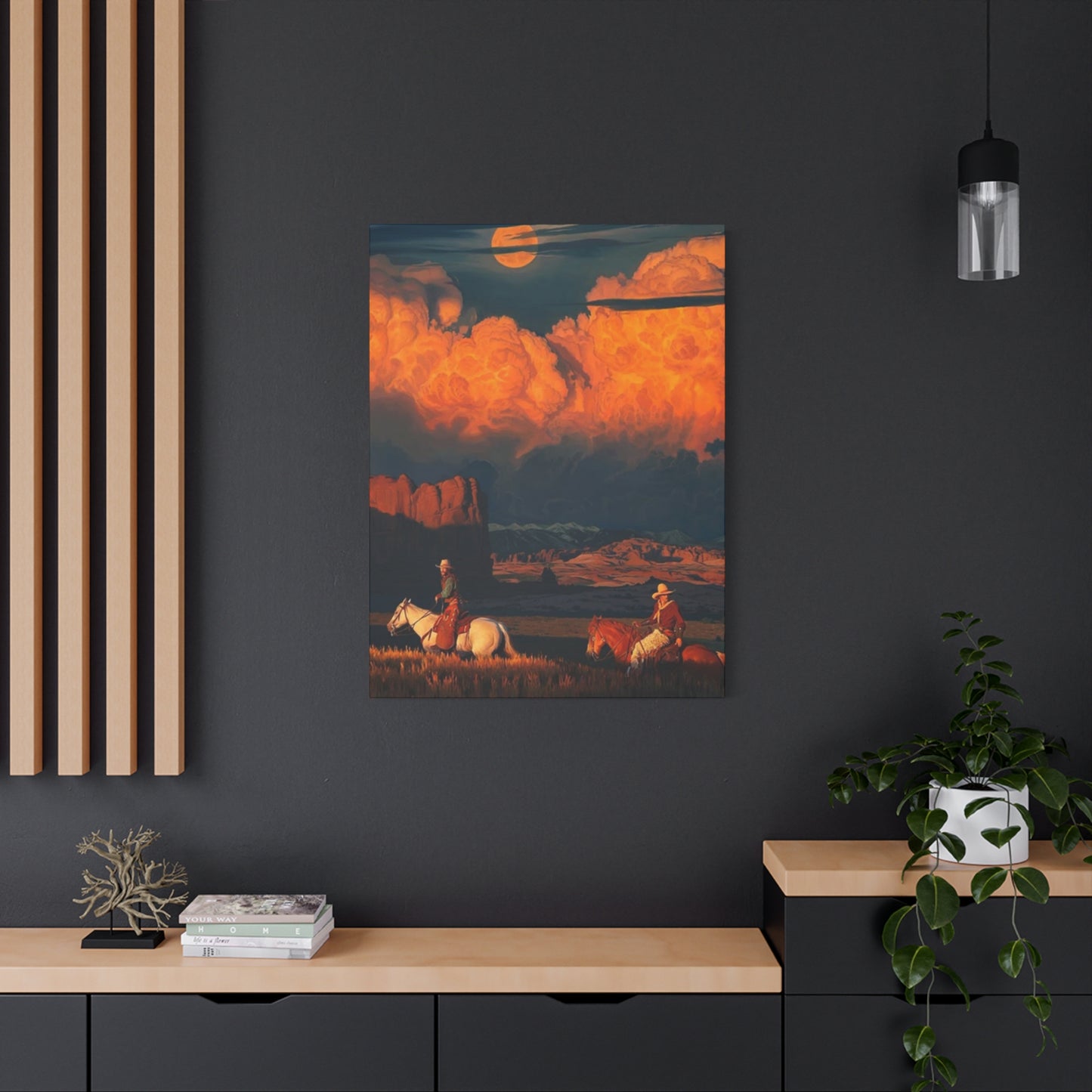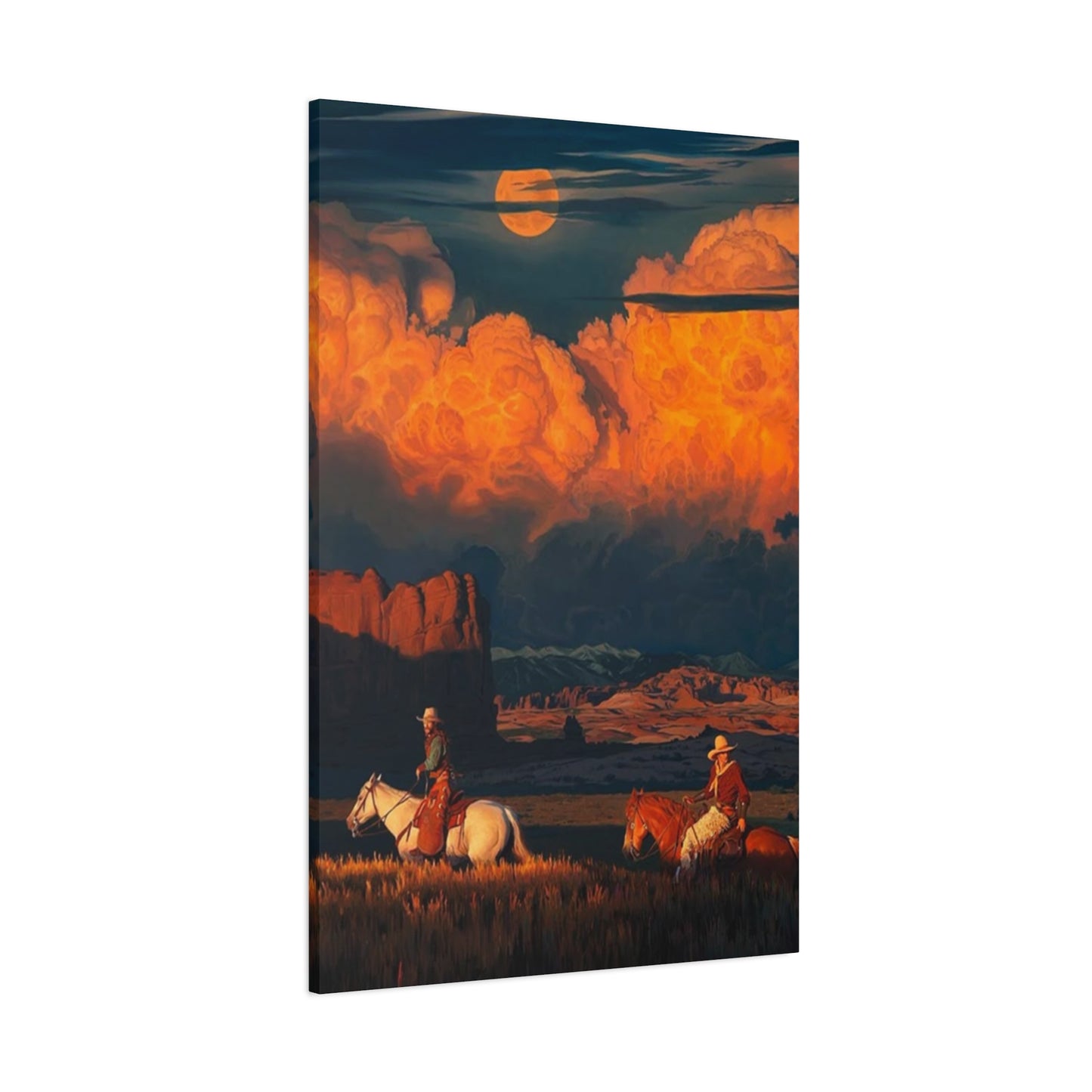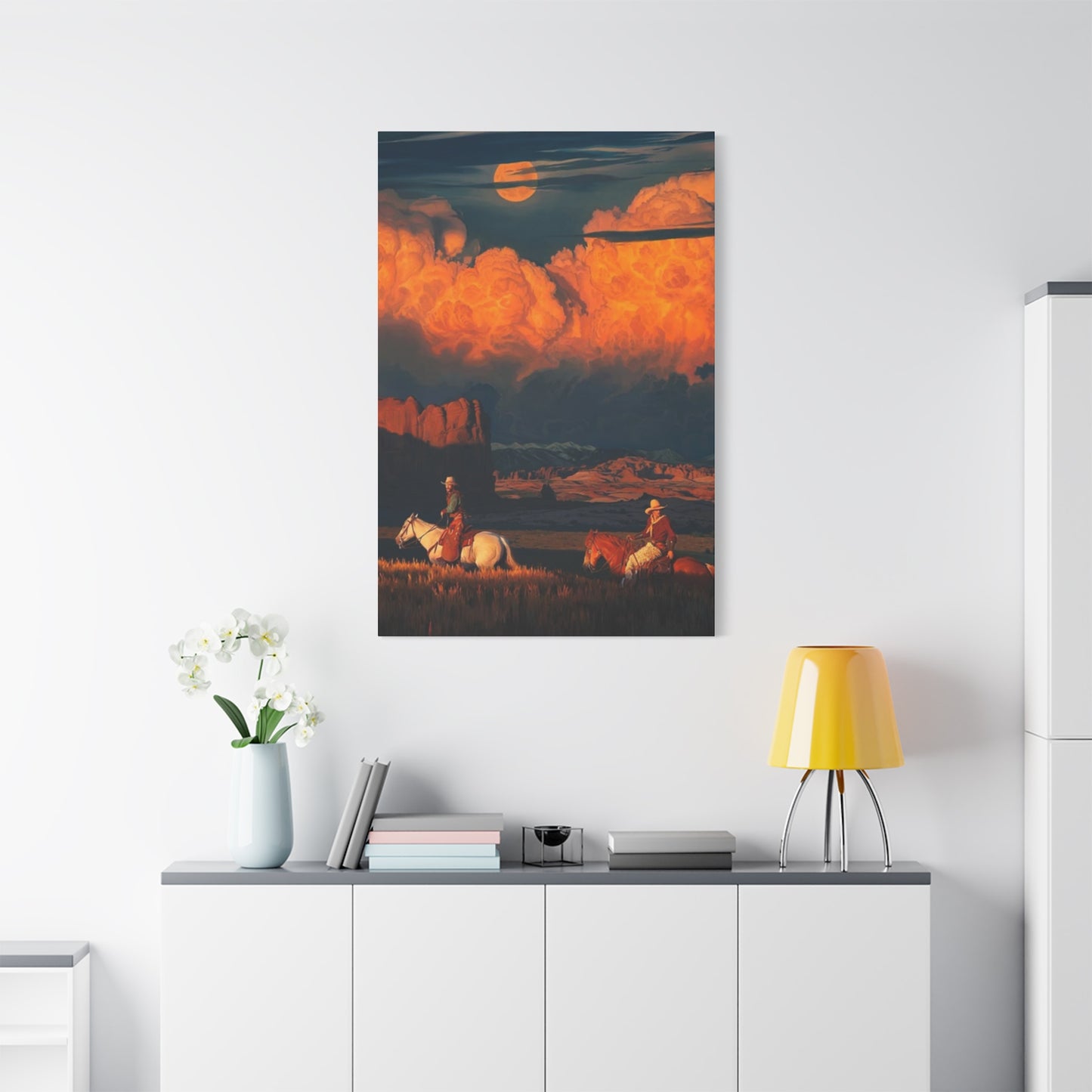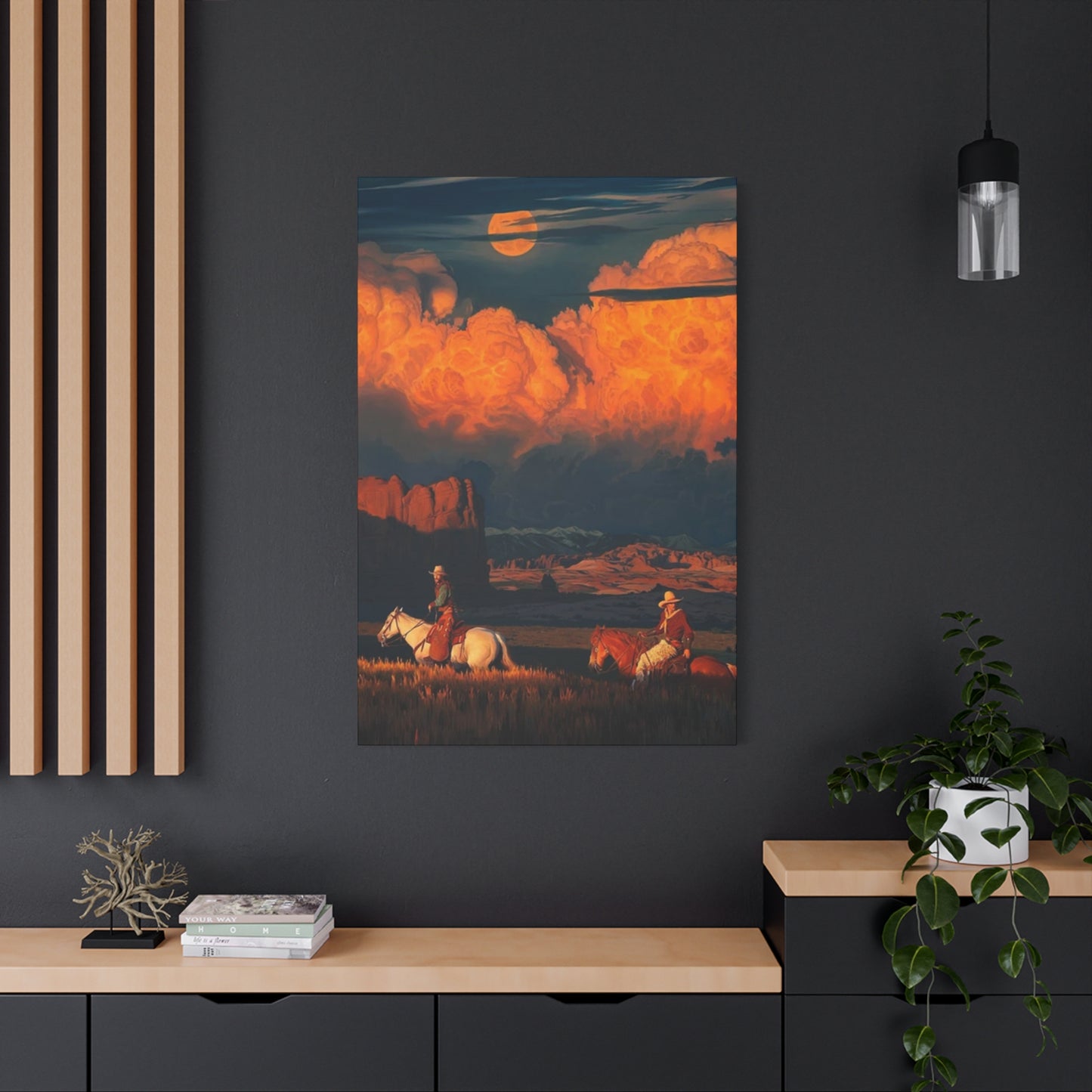Cowboys In Grassland Wall Art & Canvas Prints
Cowboys In Grassland Wall Art & Canvas Prints
Couldn't load pickup availability
Western Heritage in Every Stroke: Cowboys in Grassland Wall Art Bringing Nature and Tradition Together
The allure of western-themed décor has captivated homeowners, interior designers, and art enthusiasts for generations. Among the most sought-after pieces in this genre stands cowboys in grassland wall art, a timeless representation of rugged individualism, vast open landscapes, and the romantic notion of frontier life. This artistic style captures the essence of cattle ranchers traversing endless prairies, the golden hues of wild grasses swaying in gentle breezes, and the untamed spirit of the American West. When incorporated thoughtfully into residential or commercial spaces, such artwork serves as more than mere decoration; it becomes a conversation starter, a window into a bygone era, and a testament to the enduring fascination with cowboy culture.
The visual impact of cowboys in grassland wall art extends far beyond its aesthetic appeal. These pieces evoke powerful emotions and memories, transporting viewers to windswept plains where horse hooves thunder across sun-baked earth and where the horizon stretches infinitely in all directions. Whether rendered in oil paintings, canvas prints, metal sculptures, or photographic reproductions, this artistic genre celebrates the symbiotic relationship between humans, animals, and nature. The grassland backdrop provides a sense of freedom and possibility, while the cowboy figures symbolize resilience, self-reliance, and connection to the land.
Why Western-Themed Artwork Resonates With Contemporary Audiences
In our increasingly urbanized world, western-themed artwork serves as a bridge to simpler times and more direct relationships with nature. The popularity of cowboys in grassland wall art stems from multiple psychological and cultural factors that transcend generational boundaries. For some, these pieces represent a longing for wide-open spaces and escape from the confines of city living. Others appreciate the artwork for its connection to family heritage, particularly those with ancestral ties to ranching communities or western states.
The symbolic weight carried by cowboy imagery cannot be understated. These figures embody qualities that remain universally admired: courage in facing adversity, competence in practical skills, loyalty to companions, and harmony with the natural environment. When depicted against expansive grasslands, the cowboy becomes even more emblematic of humanity's capacity to thrive in challenging circumstances while respecting the land that sustains them. This resonance explains why such artwork maintains consistent popularity across diverse demographic groups, from country music enthusiasts to outdoor recreation advocates.
Contemporary interior design trends have also contributed to the renewed interest in western-themed pieces. The rise of rustic, farmhouse, and eclectic decorating styles creates perfect contexts for cowboys in grassland wall art. These pieces complement exposed wood beams, leather furnishings, natural stone accents, and earth-toned color palettes that define modern rustic aesthetics. Even in more minimalist or contemporary settings, a carefully selected western artwork can serve as a striking focal point that adds warmth and character to otherwise sterile environments.
Selecting the Perfect Cowboys In Grassland Wall Art For Your Space
Choosing the right piece requires careful consideration of multiple factors, beginning with the physical dimensions of your space. Large-scale artwork makes bold statements in spacious rooms with high ceilings, such as great rooms, lodges, or open-concept living areas. A sprawling canvas depicting multiple cowboys herding cattle across windswept prairies can anchor an entire room's design scheme. Conversely, smaller pieces work beautifully in intimate settings like home offices, bedrooms, or hallway galleries where viewers can appreciate finer details up close.
Color palette represents another crucial consideration when selecting cowboys in grassland wall art. Traditional western artwork often features warm earth tones—burnt siennas, golden yellows, rich browns, and sage greens—that evoke the natural landscape of prairie regions. These hues integrate seamlessly with wood furnishings and leather accents common in western-themed interiors. Some artists favor more dramatic approaches, incorporating stormy skies, dramatic lighting effects, or sunset palettes that add emotional intensity to the scene. Consider how the artwork's colors will interact with existing wall colors, furniture, and decorative elements in your space.
The artistic style presents yet another dimension for consideration. Photorealistic paintings capture intricate details of cowboy gear, horse anatomy, and grassland vegetation with stunning precision. These works appeal to viewers who appreciate technical mastery and lifelike representation. Impressionistic interpretations, by contrast, emphasize mood and atmosphere over literal accuracy, using loose brushstrokes and expressive color application to convey the essence of the western experience. Abstract approaches deconstruct cowboy and grassland imagery into geometric shapes or color fields, offering contemporary takes on traditional themes that suit modern design sensibilities.
Materials and Mediums That Bring Western Scenes to Life
The physical medium through which cowboys in grassland wall art manifests significantly impacts its visual presence and longevity. Traditional oil paintings offer rich, luminous colors and textured surfaces that change subtly under different lighting conditions. The layered application of oil paint creates depth and dimension that flat reproductions cannot replicate. Collectors prize original oil paintings for their uniqueness and the tangible connection to the artist's creative process, though they typically command premium prices.
Canvas prints provide accessible alternatives that democratize access to western artwork. High-quality giclée printing processes reproduce original paintings with remarkable fidelity, capturing subtle color gradations and fine details. Gallery-wrapped canvases eliminate the need for framing, presenting clean edges that suit contemporary aesthetics. These prints offer excellent value propositions, making museum-quality imagery available at fractions of original artwork costs. When produced using archival inks and premium canvas materials, prints maintain their vibrancy for decades under proper display conditions.
Metal prints represent relatively recent innovations that bring unexpected contemporary flair to traditional western subjects. The process infuses dyes directly into specially coated aluminum sheets, creating luminous images with exceptional sharpness and color saturation. The reflective quality of metal surfaces adds subtle dynamism as viewing angles and lighting conditions change. Cowboys in grassland wall art rendered on metal combines the rugged durability of the medium with the timeless appeal of western imagery, creating intriguing juxtapositions that work surprisingly well in both rustic and modern settings.
Wooden panels and reclaimed barn wood serve as rustic substrates that enhance the authenticity of western-themed artwork. Artists may paint directly onto weathered wood surfaces or mount prints onto wooden backing for added texture and dimension. The natural grain patterns, knots, and weathering of wood complement grassland and cowboy imagery, reinforcing connections to the natural world and frontier heritage. These pieces particularly suit cabin interiors, lodges, or homes emphasizing sustainable and reclaimed materials.
Composition Elements That Define Compelling Grassland Scenes
Masterful cowboys in grassland wall art balances multiple compositional elements to create harmonious and engaging visual narratives. The interplay between figure and landscape establishes the fundamental tension that gives these works their power. Some compositions position cowboy figures as dominant focal points, rendering them in sharp detail against softer, atmospheric backgrounds. This approach emphasizes human presence and agency within the vast landscape. Alternative compositions diminish human scale, showing tiny mounted figures dwarfed by enormous grassland expanses, highlighting nature's majesty and humbling scale.
The treatment of light profoundly influences mood and atmosphere in western scenes. Golden hour illumination—the warm, diffused light occurring shortly after sunrise or before sunset—bathes grasslands in ethereal glows that photographers and painters covet. This lighting creates long shadows, emphasizes texture in grass and vegetation, and imbues scenes with nostalgic, dreamlike qualities. Harsh midday sun produces different effects, with bright highlights and deep shadows creating dramatic contrasts that convey heat and the challenging conditions cowboys endured. Overcast skies or approaching storms introduce tension and foreboding, suggesting the unpredictability of frontier life.
The depiction of movement adds dynamism to static images. Artists employ various techniques to convey motion: windblown grass bending in unified directions, galloping horses with muscles tensed and manes flying, dust clouds rising from churning hooves, or cowboys leaning into their saddles during fast rides. These kinetic elements transform peaceful pastoral scenes into thrilling action sequences that capture viewers' imaginations. Even subtle suggestions of movement—a horse's switching tail, fabric fluttering on a cowboy's shirt, or clouds drifting across vast skies—infuse scenes with life and prevent them from feeling stagnant.
Pairing Cowboys In Grassland Wall Art With Complementary Décor
Creating cohesive interior environments requires thoughtful coordination between cowboys in grassland wall art and surrounding design elements. Furniture selections should either harmonize with or deliberately contrast against the artwork, depending on your desired aesthetic effect. Leather sofas and chairs in rich browns or distressed finishes naturally complement western artwork, their patinated surfaces echoing the worn authenticity of cowboy gear. Wooden furniture pieces, particularly those crafted from reclaimed materials or featuring live-edge details, reinforce connections to nature and frontier craftsmanship.
Textile choices amplify the western theme when carefully curated. Wool blankets in Native American-inspired patterns, cowhide rugs, or leather throw pillows introduce tactile variety while maintaining thematic consistency. Avoid overwhelming spaces with excessive western motifs; instead, select a few high-quality accent pieces that enhance without cluttering. Natural fiber textiles—linen curtains, jute area rugs, or cotton upholstery—provide neutral foundations that allow cowboys in grassland wall art to command visual attention without competing with busy patterns or artificial materials.
Lighting deserves special consideration when displaying western artwork. Track lighting or adjustable picture lights allow you to direct illumination specifically onto the artwork, enhancing colors and details while creating focal emphasis. Warm-toned LED bulbs (2700-3000K) complement the earth tones prevalent in grassland scenes better than cool blue-white lighting. If your artwork depicts dramatic sunsets or golden hour scenes, coordinating your ambient lighting to similar warm temperatures creates immersive atmospheres that extend the artwork's mood throughout the space.
Accessory items offer opportunities to reinforce western themes through smaller decorative touches. Vintage ranch tools, antique spurs, weathered leather saddles, or rope-adorned mirrors introduce authentic period details. However, restraint prevents spaces from devolving into kitschy western caricatures. Select accessories with genuine patina and craftsmanship rather than mass-produced replicas. Display items purposefully, treating them as curated collections rather than random accumulations. A single spectacular piece—a hand-tooled leather belt displayed in a shadow box, for instance—often makes stronger impressions than numerous lesser items.
Regional Variations in Western Grassland Imagery
The vast expanse of North American grasslands encompasses diverse ecosystems, each with distinctive characteristics that artists capture in their work. Great Plains imagery typically features flat or gently rolling terrain extending to distant horizons, with shortgrass prairies dominated by buffalo grass and blue grama. The sky assumes enormous visual importance in these compositions, often occupying two-thirds or more of the canvas. Cowboys in grassland wall art depicting Great Plains scenes emphasize the overwhelming sense of space and exposure that defines the region.
Tallgrass prairie representations showcase more varied topography and denser vegetation, with big bluestem, Indian grass, and switchgrass reaching heights that sometimes obscure mounted riders. These compositions tend toward lusher, greener color palettes during growing seasons, though autumn scenes explode with golden yellows and burnt oranges as grasses cure. The Flint Hills region of Kansas and the remaining tallgrass preserves in Oklahoma provide particular inspiration for artists drawn to this ecosystem's distinctive character.
Mountain grassland scenes incorporate dramatic topographical elements absent from plains imagery. Cowboys herding cattle through high meadows with snow-capped peaks in the background create compositions with strong vertical elements and multiple depth planes. These pieces appeal to viewers who appreciate the grandeur of mountain landscapes while maintaining connection to cowboy culture. The combination of alpine environments and ranching activities speaks to the versatility and adaptability required of frontier people.
Desert grassland interpretations present yet another distinct aesthetic, featuring sparser vegetation, distinctive flora like yucca and mesquite, and often incorporating red rock formations or mesas in the background. The color palettes shift toward sandy tans, reddish browns, and dusty grays, with vegetation appearing more scrubby than lush. Cowboys in grassland wall art depicting southwestern desert grasslands evokes the harsh beauty of regions like southern Arizona, New Mexico, and western Texas, where ranching traditions continue despite challenging climatic conditions.
The Symbolism Embedded in Cowboy and Grassland Imagery
Beyond their surface beauty, cowboys in grassland wall art carries rich symbolic meanings that resonate on subconscious levels. The cowboy figure represents multiple idealized qualities that American culture particularly values: self-sufficiency, physical competence, integrity, and the willingness to work hard without complaint. These characters embody the frontier spirit—the belief that individuals can carve out meaningful lives through determination and skill, regardless of background or circumstance. When viewers encounter cowboy imagery, they connect with these archetypal qualities, even if their own lives bear little resemblance to frontier existence.
The grassland itself functions as a powerful symbol of freedom, opportunity, and natural abundance. Unlike forests that restrict vision and movement, grasslands offer clear sightlines to distant horizons, metaphorically suggesting unlimited possibilities. The seasonal cycles of grasslands—dormant winters, vibrant springs, productive summers, and golden autumns—mirror life's rhythms and the importance of patience and adaptation. When combined with cowboy figures, grasslands represent the stage upon which human character reveals itself through interaction with unforgiving but ultimately fair natural environments.
The relationship between horse and rider adds another symbolic layer. The partnership between cowboy and mount represents cooperation between human intelligence and animal instinct, between civilization and wildness. This bond speaks to humanity's complex relationship with the natural world—neither complete domination nor passive submission, but rather negotiated coexistence built on mutual respect and understanding. Cowboys in grassland wall art that thoughtfully depicts this partnership invites viewers to consider their own relationships with animals and nature.
Solitude versus community presents another thematic tension in western artwork. Some pieces depict lone cowboys traversing grasslands in isolation, evoking themes of independence and self-reliance. Others show groups working together—driving cattle, setting up camp, or sharing meals—emphasizing cooperation and camaraderie. Both visions hold truth; frontier life required both the ability to function independently and the wisdom to recognize when collective effort was necessary. The balance artists strike between these poles reveals their interpretations of western character and values.
Caring For and Preserving Western Artwork
Proper maintenance ensures that cowboys in grassland wall art retains its visual impact for generations. Environmental factors pose the greatest threats to artwork longevity. Direct sunlight causes irreparable fading, particularly in prints and watercolors. Ultraviolet radiation breaks down pigments and degrades paper or canvas fibers. Position artwork away from windows receiving direct sun, or install UV-filtering window films and use museum-quality glazing on framed pieces. Even artificial lighting generates heat and minor UV emissions; avoid placing high-wattage bulbs in close proximity to artwork.
Humidity fluctuations cause canvas to expand and contract, potentially cracking paint layers or warping substrates. Maintain consistent relative humidity between forty and fifty percent in rooms housing valuable artwork. Extremely dry conditions make organic materials brittle, while excessive moisture encourages mold growth and foxing (brownish spots) on paper. Consider using humidifiers or dehumidifiers to maintain stable conditions, particularly in regions with extreme seasonal variations.
Temperature stability matters nearly as much as humidity control. Avoid hanging cowboys in grassland wall art near heating vents, fireplaces, or exterior walls that experience significant temperature swings. Extreme heat accelerates chemical degradation of materials, while repeated freeze-thaw cycles in unheated spaces cause physical damage. Ideally, maintain consistent temperatures between sixty-five and seventy-five degrees Fahrenheit.
Regular but gentle cleaning prevents dust accumulation that can grind into paint surfaces or attract moisture. For unglazed canvas or panel paintings, use soft, clean brushes (natural hair works best) to gently dust surfaces every few months. Never use household dusters or cloths that may contain chemicals or leave lint. For framed pieces behind glass, clean glazing with microfiber cloths slightly dampened with distilled water; avoid commercial glass cleaners that may seep behind glass and damage artwork. Metal prints require only occasional wiping with soft, dry cloths to remove fingerprints or dust.
Commissioning Custom Cowboys In Grassland Wall Art
Commissioning original artwork allows you to obtain precisely the piece that matches your vision and space requirements. Begin by researching artists whose styles resonate with your aesthetic preferences. Many western artists maintain online portfolios showcasing their range and approach. Look beyond technical proficiency to identify artists whose interpretation of cowboy and grassland subjects aligns with the mood and message you wish to convey. Some artists favor romantic, idealized visions of the West, while others pursue grittier, more realistic depictions that acknowledge the hardships of frontier life.
Initial consultations establish project parameters and expectations. Discuss dimensions, orientation (horizontal landscapes versus vertical compositions), and any specific elements you envision—particular horse breeds, time of day, weather conditions, or landscape features. Share reference images that capture the mood you're seeking, but remain open to the artist's creative interpretation. Experienced artists bring expertise in composition, color harmony, and narrative that can elevate your initial concept beyond what you might imagine independently.
Budget considerations extend beyond the artwork's purchase price. Factor in framing costs for canvas or panel paintings, shipping expenses for large pieces, and insurance for valuable originals. Commission prices typically reflect the artist's experience, the piece's size, and the medium's complexity. Oil paintings command higher prices than watercolors or drawings due to materials costs and execution time. Established artists with gallery representation naturally charge more than emerging talents, though the latter may offer excellent value for collectors willing to discover new voices.
Timeline expectations require clarity from the project's outset. Most artists work on multiple commissions simultaneously, so completion may require several months, particularly for large or complex pieces. Rush orders typically incur additional fees. Reputable artists provide progress updates and may share preliminary sketches or photos of works in progress, allowing for minor adjustments before completion. Establish payment terms in advance; many artists request deposits (often fifty percent) upon commission acceptance, with balance due upon completion.
Cowboys In Grassland Wall Art in Commercial Spaces
Western-themed artwork serves commercial environments particularly effectively, creating distinctive brand identities and memorable customer experiences. Restaurants specializing in steakhouses, barbecue, or southwestern cuisine naturally incorporate cowboys in grassland wall art to reinforce their culinary themes. These pieces establish atmospheric contexts that enhance diners' experiences, making meals feel like events rather than mere transactions. Large-scale murals or multiple coordinated pieces transform dining rooms into immersive environments that customers remember and recommend to others.
Hotel and resort properties in western states frequently feature regional artwork to emphasize sense of place and connection to local heritage. Cowboys in grassland wall art in guest rooms, lobbies, and common areas helps create cohesive design narratives that distinguish properties from generic chain accommodations. Guests seeking authentic western experiences appreciate these thoughtful touches, which contribute to overall satisfaction and positive reviews. Properties may commission custom pieces that incorporate local landmarks or regional landscapes, further strengthening place-based branding.
Corporate offices, particularly those of companies connected to ranching, petroleum, outdoor recreation, or western states, use cowboys in grassland wall art to communicate company values and heritage. These pieces in conference rooms, executive offices, or reception areas signal the organization's roots and principles to employees, clients, and visitors. The imagery suggests reliability, practical competence, and connection to land—qualities most companies wish to project. Thoughtfully selected artwork elevates corporate spaces beyond sterile functionality, creating environments that employees take pride in and that impress visitors.
Retail establishments selling western wear, outdoor gear, or home décor naturally incorporate themed artwork to establish brand identity and create shopping environments aligned with their merchandise. Cowboys in grassland wall art helps customers envision how products fit into aspirational lifestyles. When shoppers see artwork depicting the rugged outdoor activities they pursue or admire, they form emotional connections that facilitate purchasing decisions. The artwork essentially tells brand stories more powerfully than advertising copy ever could.
Collecting Western Artwork as Investment
The western art market has demonstrated remarkable stability and growth over decades, with top-tier pieces by recognized masters commanding six-figure prices at major auction houses. However, successful art collecting requires knowledge, patience, and strategic thinking rather than treating purchases merely as speculative investments. Begin by developing genuine appreciation for western art through museum visits, gallery exhibitions, and extensive reading. Understanding artistic movements, influential practitioners, and stylistic evolution within the genre provides foundations for making informed acquisition decisions.
Authenticity verification represents a crucial concern in any art market. Reputable galleries and auction houses provide provenance documentation tracing ownership history and establishing works' legitimacy. When considering significant purchases, request condition reports from qualified conservators who can identify restoration work, damage, or other factors affecting value. For works by deceased masters, consult catalogue raisonné publications that comprehensively document artists' authenticated output. Beware of deals that seem too good to be true; forgeries and misattributions plague every art market segment.
Emerging artists offer compelling opportunities for collectors with limited budgets but strong connoisseurship. Attending regional exhibitions, graduate school shows, and open studio events allows you to discover talented practitioners before their work commands premium prices. Building relationships with promising artists often yields opportunities to acquire choice pieces before they reach galleries. However, predicting which emerging talents will achieve lasting recognition requires sophisticated aesthetic judgment and considerable luck. Collect primarily for enjoyment rather than expected financial returns.
Documentation and proper storage enhance artwork's long-term value. Maintain detailed records of purchase prices, dates, seller information, and any provenance details. Photograph artwork regularly to document condition. Store works not currently displayed in climate-controlled environments using acid-free materials. Consider obtaining appraisals from qualified professionals for insurance purposes and estate planning. These practices protect your financial interests while ensuring artwork's physical preservation for future generations.
The Influence of Western Films and Literature on Artistic Interpretation
Popular culture has profoundly shaped public perceptions of cowboys and grasslands, which in turn influences artistic interpretations and market preferences. Classic western films from Hollywood's golden age established visual vocabularies that continue resonating today. John Ford's Monument Valley landscapes, the sweeping vistas of "The Big Country," and the gritty realism of later revisionist westerns all contributed aesthetic frameworks that artists consciously or unconsciously reference. Cowboys in grassland wall art often echoes cinematic compositions, lighting approaches, and narrative implications familiar from beloved films.
Literary sources have equally influenced western artistic traditions. The novels of Zane Grey, Louis L'Amour, and Cormac McCarthy created vivid descriptive passages that artists have translated into visual form. These writers' attention to landscape details, weather conditions, and the physical realities of frontier life inform artistic approaches prioritizing authenticity over romanticism. Contemporary western literature continues inspiring artists, with recent works exploring more nuanced and diverse perspectives on western experiences that broaden the genre's thematic range.
The interplay between artistic depictions and popular media creates feedback loops that reinforce certain iconographic elements. The image of the lone cowboy silhouetted against sunset skies has become almost clichéd through repetition, yet remains powerfully evocative because it distills complex ideas into instantly recognizable visual shorthand. Artists working within the western genre navigate tensions between honoring these established conventions and seeking fresh perspectives that avoid tired formulas. The most successful cowboys in grassland wall art respects tradition while offering unique viewpoints that justify the work's existence.
Romanticized versus realistic depictions represent another dimension of popular culture's influence. Earlier artistic and literary traditions often sanitized frontier life, emphasizing adventure and heroism while minimizing hardship, violence, and moral complexity. More recent approaches acknowledge the West's darker aspects—displacement of indigenous peoples, environmental exploitation, brutal living conditions, and lawlessness. Contemporary artists increasingly embrace these complexities, creating work that celebrates western heritage while honestly confronting its problematic elements. This evolution reflects broader cultural shifts toward more inclusive and critical historical narratives.
Incorporating Indigenous Perspectives in Western Grassland Imagery
Traditional western art has overwhelmingly focused on European-American cowboys and settlers, often marginalizing or ignoring indigenous peoples whose cultures shaped grassland environments for millennia before European contact. More conscientious contemporary approaches acknowledge this imbalance by incorporating indigenous perspectives, subjects, and artistic traditions into cowboys in grassland wall art. Some artists collaborate with Native American communities to ensure respectful and accurate cultural representation. Others highlight indigenous horsemanship traditions that predate and influenced cowboy culture.
The relationship between indigenous peoples and grassland ecosystems offers rich thematic material that enriches western art beyond conventional cowboy imagery. Native American cultures developed sophisticated understanding of grassland ecology, employing controlled burning practices that maintained ecosystem health and prevented woody plant encroachment. Their seasonal movement patterns followed animal migrations and plant growing cycles in sustainable rhythms that contrasted sharply with European-American approaches emphasizing permanent settlement and intensive land use. Artwork exploring these alternative relationships with grasslands provides valuable counterpoints to dominant narratives.
Stylistic influences from indigenous artistic traditions can enhance western artwork's visual richness and cultural depth. Geometric patterns from beadwork and textile arts, symbolic motifs carrying spiritual significance, and color palettes derived from natural pigments offer distinctive aesthetic elements. Some artists create hybrid works that synthesize European painting traditions with Native American design principles, producing innovative pieces that transcend simplistic cultural boundaries. These cross-cultural explorations acknowledge the diverse peoples who have inhabited and shaped grassland regions.
Ethical considerations arise when non-indigenous artists engage with Native American subjects or aesthetics. Cultural appropriation concerns are legitimate, particularly when artists exploit indigenous imagery without understanding or respecting its significance, or when commercial gain accrues to outsiders rather than community members. Best practices include seeking permission when depicting ceremonial activities, crediting cultural sources for design elements, supporting Native American artists through purchases and promotion, and educating viewers about the cultural contexts informing the work. Cowboys in grassland wall art can honor indigenous contributions to western heritage when approached with sensitivity and genuine respect.
Seasonal Variations in Grassland Artwork
Grassland ecosystems undergo dramatic seasonal transformations that provide artists with diverse aesthetic opportunities within the same fundamental subject matter. Spring grasslands burst with fresh growth, tender green shoots emerging from dormant root systems. Wildflowers add splashes of color—purple coneflowers, yellow black-eyed Susans, red Indian paintbrush—transforming monochromatic winter landscapes into vibrant tapestries. Cowboys in grassland wall art depicting spring conveys renewal, hope, and the beginning of new cycles. Calving season and the start of herding activities provide narrative contexts for human figures in these compositions.
Summer representations show grasslands at peak productivity, with vegetation reaching maximum height and density. The color palette shifts toward deeper greens, golden yellows, and warm earth tones as grasses mature and cure under intense sunlight. Heat haze shimmering above the ground adds atmospheric effects that painters render through softened edges and subtle color gradations. Summer scenes often depict cowboys engaged in peak activity—working cattle, mending fences, or moving herds to new pastures. The harsh midday light and potential for thunderstorms add dramatic possibilities to summer compositions.
Autumn grassland scenes perhaps offer the most spectacular color opportunities, as curing grasses turn brilliant golds, russets, and ambers. The low angle of sunlight characteristic of fall creates warm, glowing illumination that enhances these colors. Many consider autumn the most photogenic grassland season, and artists frequently exploit these visual riches. Thematically, autumn represents harvest, preparation for winter hardships, and reflective contemplation. Cowboys in grassland wall art featuring autumn scenes often convey bittersweet moods—appreciation for beauty tinged with awareness of coming difficulties.
Winter grassland imagery presents stark, minimalist beauty that appeals to artists favoring restrained palettes and strong compositional structures. Dormant grasses in shades of tan, gray, and pale gold contrast with snow accumulations. The absence of foliage reveals underlying topography more clearly than in other seasons. Winter scenes test cowboys' resilience and competence, depicting activities like feeding livestock, breaking ice on water tanks, or simply enduring harsh conditions. The limited color palette forces artists to emphasize value contrasts, textural variations, and subtle atmospheric effects. Successfully executed winter grassland scenes possess austere beauty and emotional power that lighter, more colorful seasons sometimes lack.
Framing Considerations for Western Artwork
Framing choices profoundly impact how cowboys in grassland wall art presents itself and integrates with surrounding décor. Traditional western frames typically feature substantial wood construction, often in natural finishes or dark stains that complement earth-toned imagery. Rustic frames incorporating rough-hewn wood, visible grain patterns, or carved details reinforce connections to frontier craftsmanship and natural materials. Some frames include decorative corner elements—metal accents, leather wrapping, or tooled details—that add visual interest without overwhelming the artwork itself.
Distressed or antiqued finishes lend frames an aged appearance that suits western subjects' historical associations. Techniques like wire brushing, chain distressing, or chemical aging create surfaces suggesting decades of use. These treatments work particularly well with vintage-style prints or reproductions of historical paintings. However, distressing should appear authentic rather than artificially manufactured; poorly executed aging effects undermine rather than enhance artwork presentation. Quality craftsmanship remains paramount regardless of aesthetic approach.
Contemporary framing alternatives offer intriguing possibilities for presenting western artwork in unexpected contexts. Sleek metal frames in black, bronze, or natural steel finishes create striking contrasts with traditional subject matter, highlighting the artwork's graphic qualities while suggesting dialogue between historical themes and contemporary sensibilities. Floating frames that suspend artwork slightly away from backing create depth and dimensional interest. Gallery-style presentation without frames—canvas edges wrapped and finished, ready for hanging—emphasizes the artwork itself while accommodating minimalist aesthetics.
Matting decisions require equal consideration when framing works on paper or smaller pieces. Generous mat borders focus attention on artwork while preventing visual crowding against frame edges. Neutral mat colors—cream, tan, or gray—provide safe choices that don't compete with image colors. Some framers use multiple mat layers in complementary colors, creating subtle dimensional effects. For western subjects, consider mat colors that echo landscape elements—sage greens, sky blues, or earth tones—to create harmonious relationships between artwork and presentation materials.
The Role of Photography in Western Grassland Imagery
Photographic cowboys in grassland wall art offers distinct advantages and challenges compared to painted or drawn interpretations. Photography captures details and nuances that would require extraordinary skill and patience to replicate manually—individual grass blades catching light, subtle variations in horse coat colors, authentic period details in clothing and gear. Well-executed western photography possesses documentary authority that validates its depictions as genuine rather than imagined or idealized. This authenticity particularly appeals to viewers who value historical accuracy and realistic representation.
The decisive moment concept popularized by Henri Cartier-Bresson applies powerfully to western photography. Capturing authentic cowboy activities requires patience, access, and timing to photograph fleeting expressions, dynamic actions, or perfect light conditions. Photographers specializing in western subjects often spend extended periods on working ranches, building trust with subjects and waiting for moments when all compositional elements align. This dedication yields images possessing spontaneity and life that staged or posed photography lacks.
Technical considerations specific to grassland photography demand specialized knowledge and equipment. The overwhelming brightness of open landscapes under full sun creates exposure challenges, with risks of blown-out skies or underexposed foreground elements. Graduated neutral density filters help balance sky and ground exposures. Polarizing filters deepen sky colors and reduce glare on grass and vegetation. The vast depth of field in grassland scenes allows, and often requires, maximum aperture settings to maintain sharpness from immediate foreground through distant horizons.
Black and white photography offers compelling alternatives to color for cowboys in grassland wall art. Removing color information forces viewers to engage with form, texture, contrast, and composition without chromatic distractions. The timeless quality of black and white imagery enhances the nostalgic and historical associations of western subjects. Dramatic lighting contrasts become even more pronounced without color to modulate tonal relationships. Many photographers working in western genres produce both color and monochrome versions of images, finding that subjects often succeed powerfully in either interpretation, though each creates different emotional impacts.
Scale and Proportion in Grassland Compositions
Artists face fundamental decisions about scale relationships between figures and landscapes in cowboys in grassland wall art. Compositions emphasizing human subjects render cowboys and horses at substantial sizes, with backgrounds serving primarily as contextual settings. This approach creates psychological intimacy between viewers and depicted figures, allowing facial expressions, clothing details, and equipment to register clearly. Such pieces function almost as portraits set in landscape contexts, with character and personality taking precedence over environmental documentation.
Conversely, diminishing human scale relative to landscape emphasizes nature's vastness and power. Tiny mounted figures traversing enormous grassland expanses create sublime effects—viewers simultaneously appreciate the landscape's grandeur while recognizing human vulnerability and insignificance. These compositions convey philosophical ideas about humanity's place in nature, the courage required to venture into overwhelming spaces, and the humility that such environments demand. The emotional impact differs markedly from intimate figure studies, trading personal connection for existential contemplation.
Middle-ground approaches balance figure and landscape, giving neither absolute dominance. These compositions function as integrated narratives where humans and environment interact as co-equal elements. The viewer's eye travels between cowboys and grasslands, appreciating both without subordinating either to the other. This balanced approach often succeeds as narrative storytelling, depicting specific activities—herding cattle, fording streams, setting up camp—where both human actions and environmental conditions matter to the scene's meaning.
Unconventional compositional approaches offer opportunities for distinctive visual impact. Extreme close-ups cropping into small portions of the scene—a horse's eye reflecting grassland, worn leather reins against prairie backdrop, boot stirrups framing distant horizons—create intimate details that suggest larger contexts beyond frame edges. Panoramic formats exploiting extreme horizontal proportions naturally suit grassland subjects, allowing sweeping vistas that capture the landscape's lateral expanse. Vertical orientations, though less intuitive for landscapes, can emphasize sky conditions or include full-length standing figures with grasslands extending to low horizons.
Conclusion
Skilled artists imbue cowboys in grassland wall art with narrative suggestions that engage viewers' imaginations beyond the frozen moment depicted. Environmental clues tell stories: distant storm clouds approaching suggest urgency in completing tasks before weather arrives; grass bent uniformly in one direction indicates persistent wind direction and hints at climate; multiple sets of hoof prints reveal other riders passing earlier. These details invite viewers to construct backstories and imagine what happened before and after the captured moment.
The positioning and interaction of multiple figures creates relationship dynamics that viewers interpret narratively. Cowboys riding close together suggest companionship and conversation; widely separated figures imply solitary work or vast territories requiring coverage; riders approaching from different directions hint at rendezvous or conflict. Body language communicates attitude and emotion—slumped shoulders convey exhaustion, alert posture suggests vigilance, relaxed seating indicates confidence and ease. Even without visible facial features, skilled artists suggest psychological states through physical bearing.
Including animals beyond horses adds narrative complexity and ecological realism. Cattle obviously tie to ranching activities, but their condition, behavior, and numbers tell specific stories—well-fed cattle in orderly groups indicate successful management, while scattered or distressed animals suggest problems. Wildlife appearances—pronghorn antelope fleeing, raptors circling overhead, coyotes watching from distance—enrich the ecological context and remind viewers that cowboys inhabited functioning ecosystems rather than empty backdrops. These elements distinguish thoughtful artwork from superficial decoration.
Temporal ambiguity versus specificity represents another narrative dimension. Some artists deliberately create timeless scenes that could occur in any decade from the 1870s through the present, emphasizing continuity of ranching traditions and landscape character. Others anchor scenes in specific historical moments through period details—particular saddle styles, clothing fashions, or equipment that identify precise eras. Contemporary cowboys in grassland wall art may include modern elements like pickup trucks or ATVs visible in middle distance, acknowledging ranching's evolution while maintaining essential character. Each approach serves different artistic purposes and appeals to different viewer preferences.
Share
